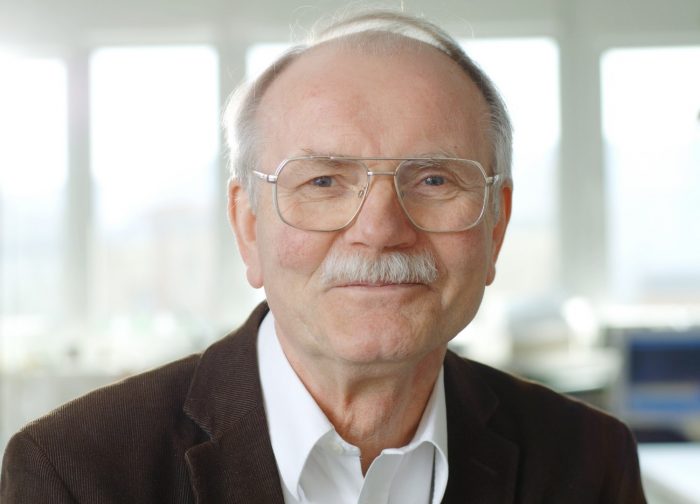Günther Schütz (1940-2020): A life devoted to nuclear receptors

By Lluis Montoliu
Prof. Dr. Günther Schütz passed away on May 28, 2020, at the age of 80. Günther Schütz was born in 1940 in Bad Schwalbach (Germany). He studied medicine in Frankfurt, Bern and Giessen and obtained his PhD at the Institute of Physiological Chemistry of Marburg University. In 1969, he went to New York’s Columbia University as a postdoctoral researcher in Philip Feigelson lab and, I believe it was there when he was trapped by the hormonal regulation of gene expression, particularly by glucocorticoids. His first paper on this subject was published in 1973 in PNAS, together with his friend and collaborator Miguel Beato. In 1975 he returned to Germany and led a working group at the Max Planck Institute for Molecular Genetics in Berlin until 1980, when he was appointed head of the Division of “Molecular Biology of the Cell I” at the German Cancer Research Center (Deutsches Krebsforschungszentrum, DKFZ) in Heidelberg, where he stayed until his definitive retirement in 2015. Since 2008 he had been appointed as Helmholtz Professor, after reaching his retirement age. In 1988 he received the most prestigious research award in Germany, the Leibniz Prize.
Günther Schütz, with his creative mind and impressive working capacity, contributed more than 450 scientific publications over his entire career. Throughout his life he was interested in understanding how steroid hormones could regulate gene activity. This idea drove his research towards understanding the genes encoding the nuclear receptors, to which steroid hormones bind to transduce their effect into the nucleus of the cell. As many as 134 publication can be found from Günther on nuclear receptors, almost 30% of his prolific production.

Günther Schütz was among the first to recognize the value of genetically-modified mouse models to study gene expression (in particular that of nuclear receptors responding to steroid hormones), and, as such, his lab was among the pioneers in Europe to produce transgenic and mutant mice, and also a constant source of mouse-related technologies that were later universally adopted. Numerous knockout (KO) mouse models with inactivated glucocorticoid or mineralocorticoid receptors were originated in his lab and have been distributed all over the world, including straight-forward KOs, or sophisticated tissue-specific and/or inducible KOs, where he could gather more information on the role of these nuclear receptors in cell differentiation, embryonic or neural development, and, eventually how sexual hormones influence brain functioning.
In his laboratory all postdoctoral researchers we had the freedom to explore side scientific projects, on the top of the activities that we had been assigned to develop. This open mind attitude was a constant through his life. He said: “Our research continues to be very exciting, because it often happens that we come across new, unexpected results.” I remember when I joined his lab and we had the first meeting in his office. After briefly discussing the projects that I would be working on, he added: “Other than that, just go and enjoy doing good science”.
Günther Schütz was a true mentor, with the talent to impact on people’s careers. I landed in Heidelberg as a plant molecular biologist and returned to Spain five years later as a mouse geneticist. Recently, after we learnt about his death, several former collaborators from his lab we organized a ZOOM virtual meeting to remember him and share our memories. Over 30 people showed up at this spontaneous gathering, from the US to Australia, and in many places in Europe. When we started collecting emails, we quickly managed to get over 70 addresses, and I am sure we are still missing many more. It is impressive to see how many generations of researchers we have been in Günther Schütz’s lab over his 40 years of research as group leader (1975-2015), and how the large majority of us remained in science and succeeded establishing as leading independent labs. We all recognized his influence in our careers, and how he transmitted his enthusiasm (and hard work) for science.
Note: Lluis Montoliu (CNB-CSIC and CIBERER-ISCIII, Madrid, Spain) was a postdoctoral researcher in Günther Schütz’s laboratory at DKFZ in Heidelberg between 1991 and 1995.
